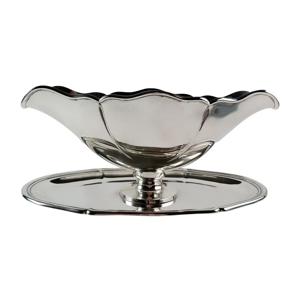Charles Lewis Tiffany left the country life of Connecticut to seek his fortune in New York, where he opened a stationery and china shop simply called Tiffany. When John B. Young became partner of Charles in 1837, they opened the first Tiffany & Co. store in Brodway. From that moment on, the silverware signed Tiffany & Co. would be recognized for its unparalleled quality and refinement. The superiority of his products and his innovative force led Charles to win an award for excellence in 1878.
The use of sterling silver – an alloy of precious metal and copper – led to what would be called the Tiffany School: typical decorations mainly reminding of oriental motives, a refined design, hammered surfaces, three-dimensional applications, and internal metal alloys. Masterpieces such as the Mackay service – consisting of 1250 pieces of silverware and crockery, made with half a ton of silver and decorated with Indian and Persian motives – crowned the team of Tiffany as the best silversmiths for the high-quality standards of their products, still undefeated. Nowadays jewels, chandeliers, cups, trays, plates, carafes, jugs signed Tiffany are recognised as grat product.




 Text via WhatsApp
Text via WhatsApp